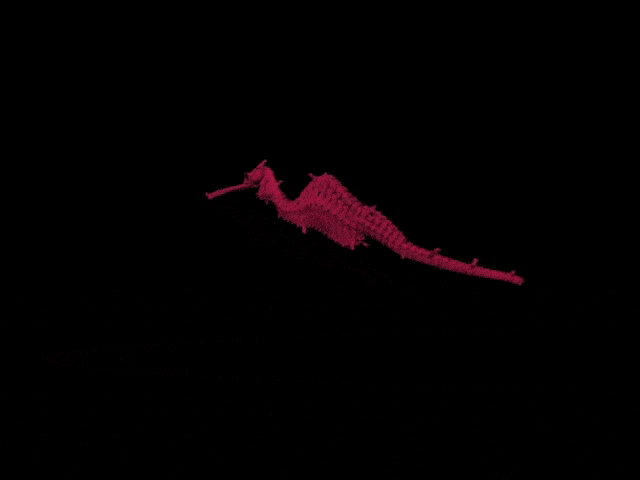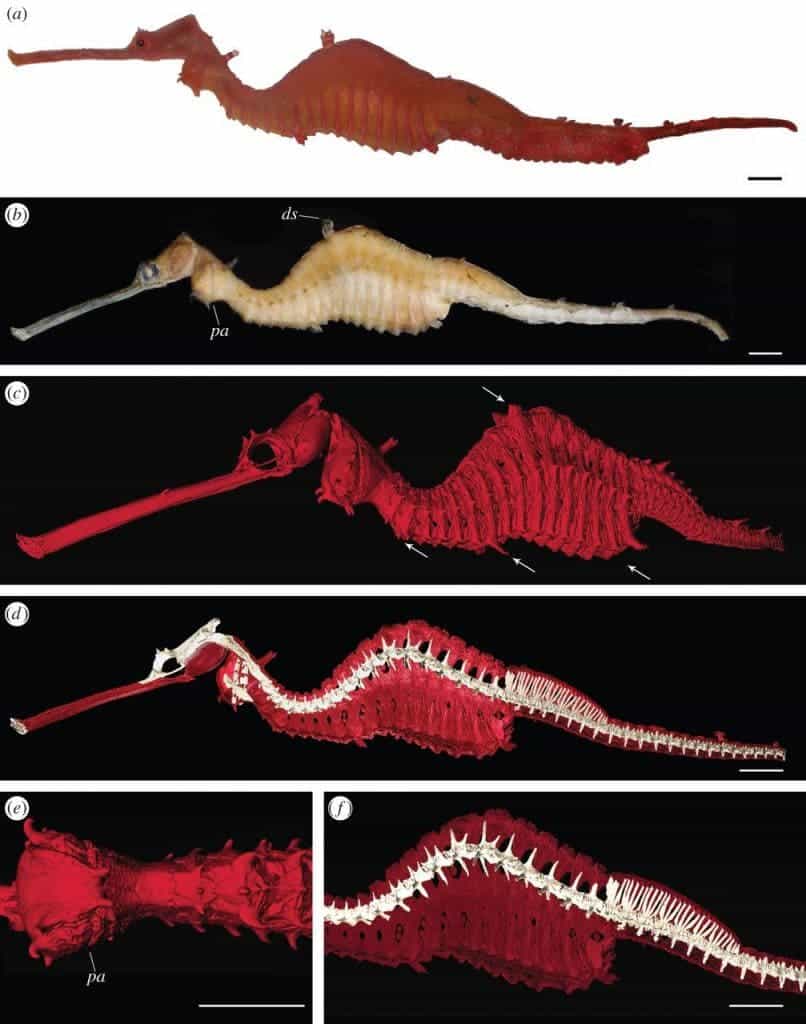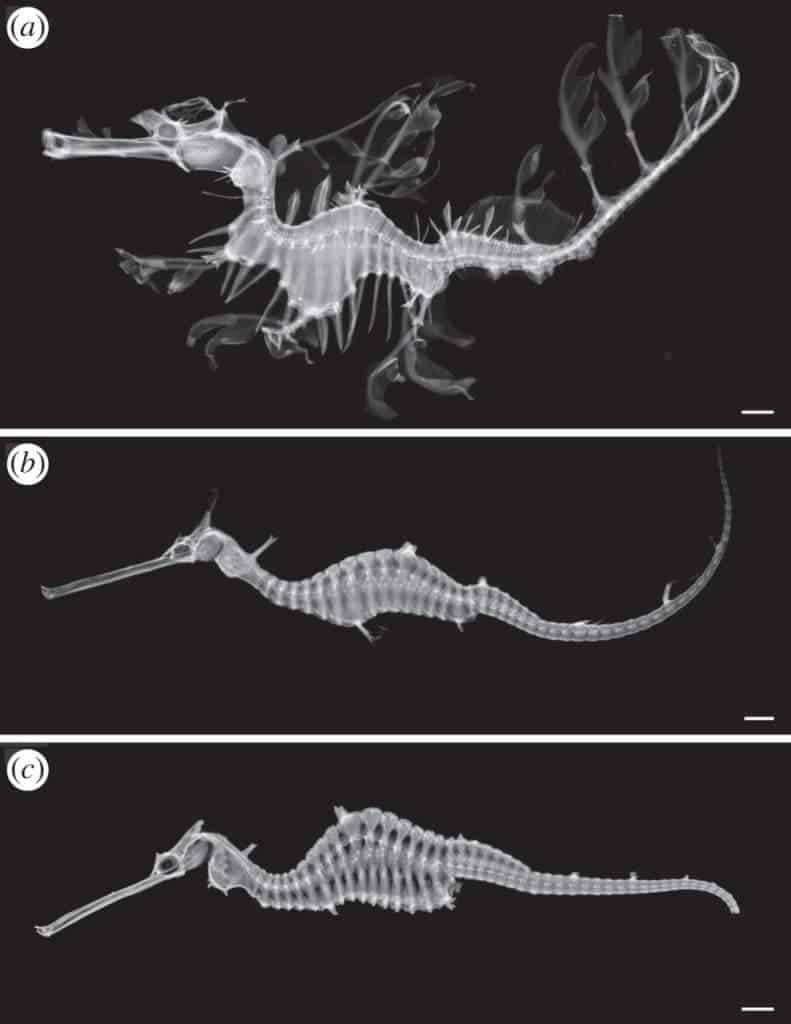Until now, only two species of seadragon had been reported, with the last one being discovered 150 years ago! Now, biologists have discovered a new species off the coast of Australia: a red hot sea dragon.

“All this time we thought that there were only two species,” marine biologist Nerida Wilson of the Western Australia Museum said in a press release. “Suddenly, there is a third species! If we can overlook such a charismatic new species for so long, we definitely have many more exciting discoveries awaiting us in the oceans.”
It may be only 15 cm long (6 inches), but Phyllopteryx dewysea is definitely a beauty. It’s basically a longer, larger version of a seahorse. There are significant differences between the two though.
“Sea dragons have very long, thin snouts; slender trunks covered in bony rings; and thin tails which, unlike their seahorse cousins, cannot be used for gripping. They have small, transparent dorsal and pectoral fins that propel and steer them awkwardly through the water, but they seem quite content to tumble and drift in the current like seaweed. … Sea dragons survive on tiny crustaceans such as mysids, or sea lice. It is not known if they are preyed upon by other animals.”

Scientists were excited to make the find offshore Australia, and actually believe that there may be other seadragons waiting to be discovered. The other two known species of seadragon are the Leafy Seadragon and the Weedy Seadragon – now we get a Ruby Seadragon.
“That such large charismatic marine species are still being found is evidence that there is still much to be done,” Rouse added. “This latest finding provides further proof of the value of scientific collections and museum holdings.”Advanced imaging allowed scientists to study the anatomy of the red seadragon and confirm their genetic findings.
The team discovered three specimens, including one which was lying around in a museum collection since 1919. Thanks to new developments in technology, they were confidently able to say it is indeed a new species.
“We’re now in a golden age of taxonomy and these powerful DNA tools are making it possible for more new species than ever to be discovered,” Greg Rouse of Scripps Oceanography, one of the study’s authors, said in a press release.
Scripps graduate student Josefin Stiller first identified this new species, a male carrying several dozen babies – because like seahorses, seadragon daddies take care of the babies. She studies migration patterns and genetic diversity to help bolster seadragon conservation efforts.

“A CT (computer tomography) scan gave us 5,000 X-ray slices that we were able to assemble into a rotating 3-D model of the new seadragon,” said Stiller. “We could then see several features of the skeleton that were distinct from the other two species, corroborating the genetic evidence.”

The team believes there’s a reason why this species is so red – it inhabits the deeper waters, where red hues are absorbed more efficiently (the same reason why water is blue) and being red colored can help camouflage.
Journal Reference (you can read the full article for free): Josefin Stiller , Nerida G. Wilson , Greg W. Rouse. A spectacular new species of seadragon (Syngnathidae). DOI: 10.1098/rsos.140458.


